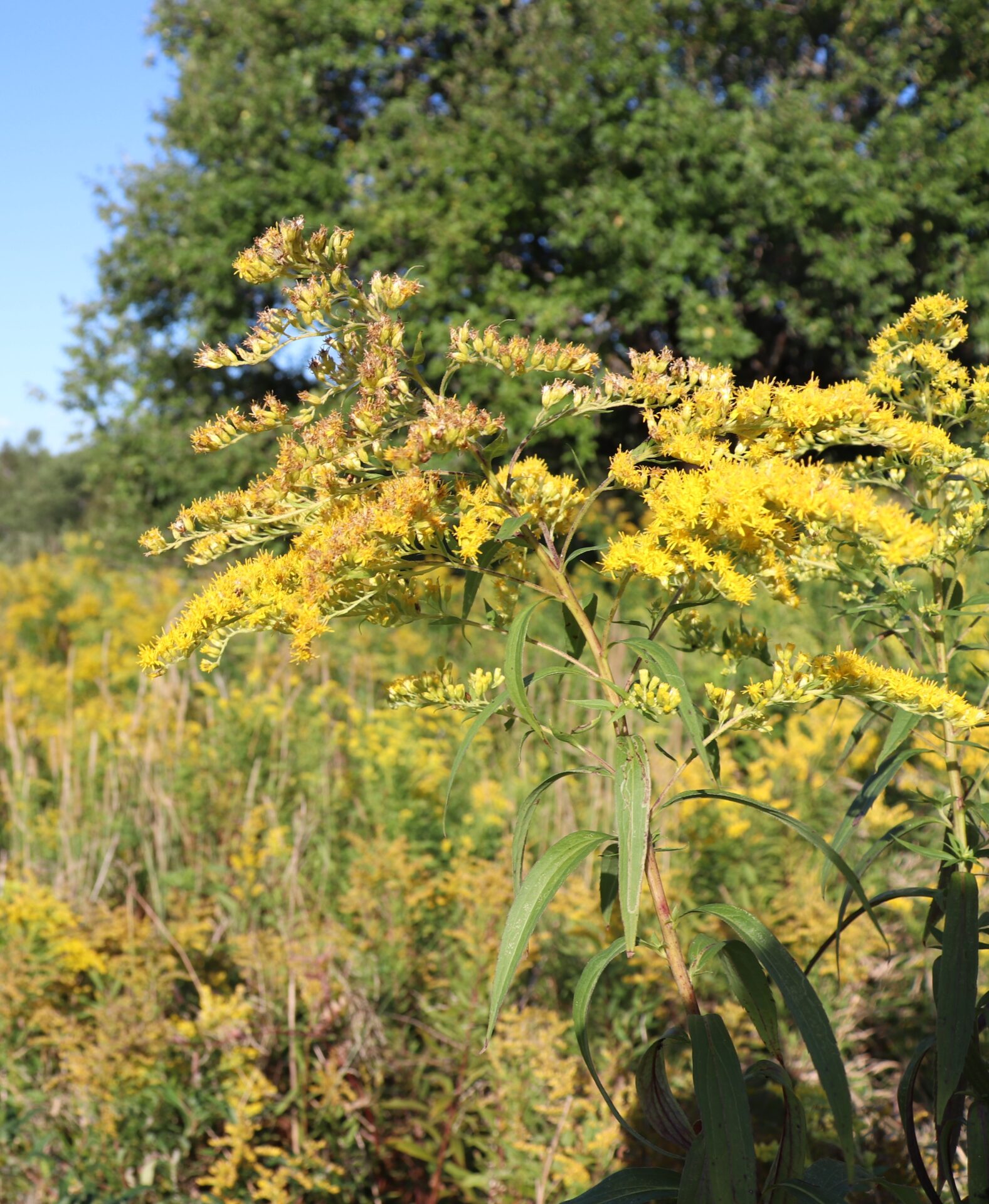Night in this World, a Journey – Part VI
It’s mid-August, the days of goldenrod. After an unusually dry winter, then a spring of localized wildfires, summer has brought record humidity and rain. Floods have been troubling yet the land feels nourished again, exuberant. Uncut hay fields ripple chest-high in the wind, snaked through with animal trails and tamped pockets of deer beds. Wildflowers have taken over the roadsides, broken through the hard-packed soil left by construction around our house, the drainage stones, the gravel paths. Pansies and lamb’s ears have migrated from plots and containers, and to my delight, a self-planted garden appeared by the front steps.
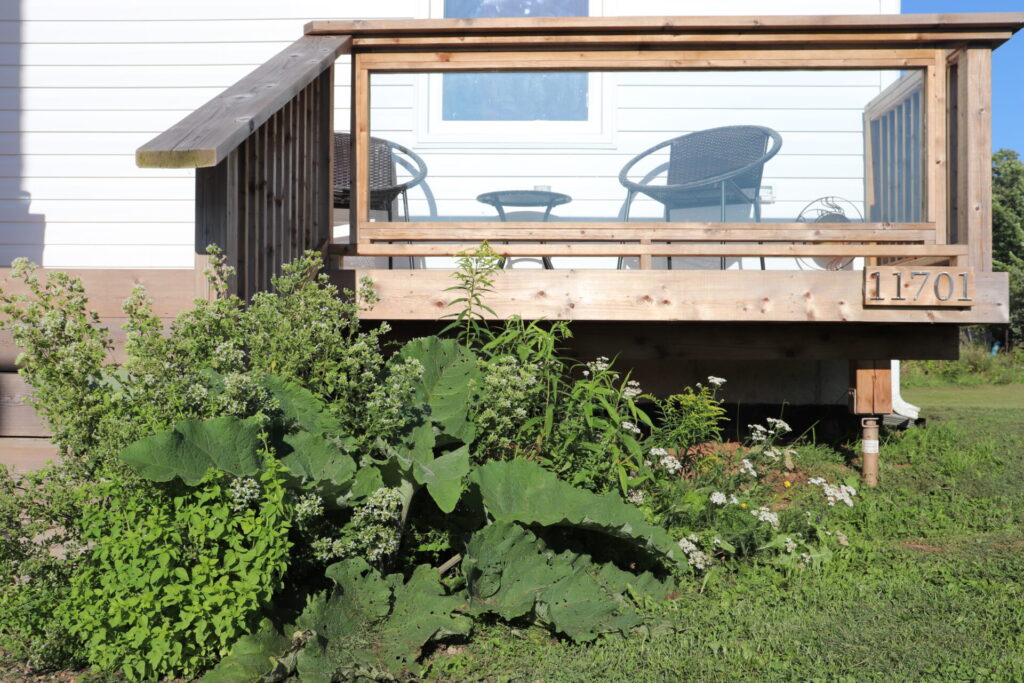
I’m heading out to the vegetable beds, my favourite place these days after a long stint teaching in Toronto this spring. As I weave around persistent puddles on the lawn, my steps squelch, and tiny biting insects rise to join the hungry cloud that pursues one everywhere, every hour. I pass the bald patch where the willow stood before the hurricane, and the new path cut through fallen aspens to the vacant field next door. The fire pit, barely lit this summer between the damp and the bugs. As usual I’m clothed head to toe, gloved, hatted and veiled in a black face net, which sounds rather pioneer woman when described, though my second-hand shirt (pinched from my husband) says Dan on it.
Out back near the woods lies an old household well. It was an early discovery here, and when we saw how it still shone with water, we knew this was the vegetable garden site. There was space and sun, an apple tree offering shade. A new platform and cast-iron hand pump brought the well back into service. This season, though, when I’ve needed water it’s come from a rain barrel: the apple tree fell in the hurricane, splintering the pump housing and platform. That tree’s now in pieces in the barn, and others still need to be cleared from 11 months ago; rebuilding the well has to wait.
It’s been a strange year.
On the first of August 2022, I launched this essay series with the plan of posting every six weeks, following the points of the solar year. The timing made sense: the essays aim to explore my relationship with this land through the seasons, and also, I’d begun a ritual practice of holding the eight fires of the Celtic calendar, which follows the solstices, equinoxes and seasonal midpoints. As it turned out, only that first essay appeared as scheduled according to Earth time. Economy time delayed the others, then thwarted any writing at all. There’s more to say on that topic, but first, a story about beans.
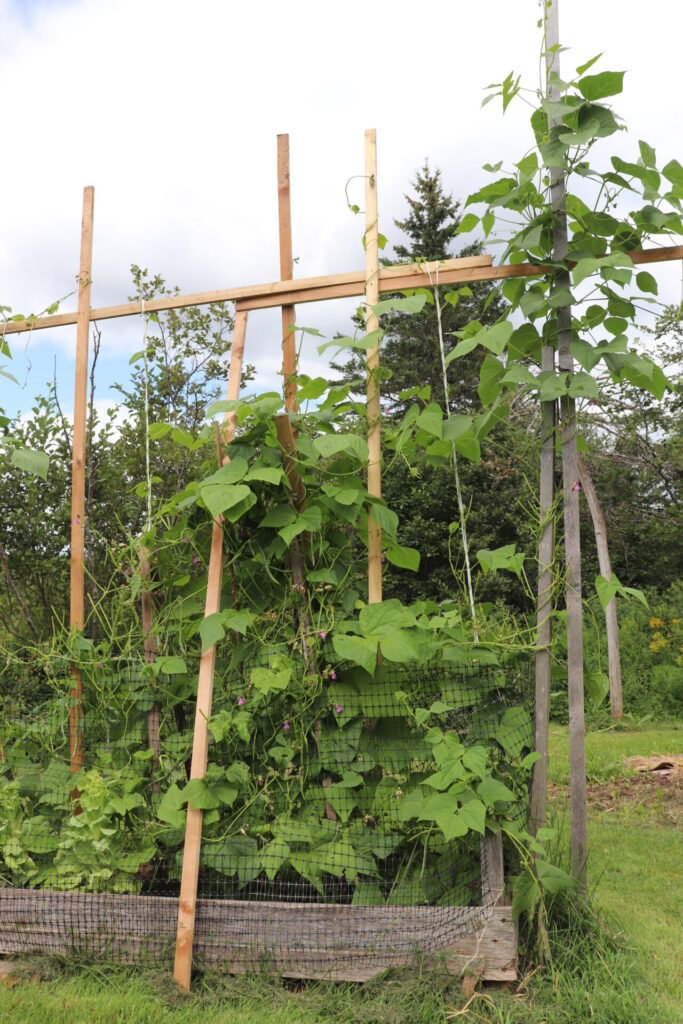
As mentioned previously I’m a novice vegetable grower: eager, ambitious, and clueless. After making new beds in late June, I planted bush beans and pole beans. I created a tepee of bamboo several feet tall for the bush beans, then wondered why the plants ignored it. The pole beans topped their stakes in no time, however, then began crawling all over each other seeking support. One stalk touched an eight-foot beam at the edge of the bed, part of a pre-hurricane structure, and each day inched up and up. Just how high would this plant climb?
Then I remembered Jack and the Beanstalk. And had my answer.
By the time I’d foraged lengths of quarter round (I think) from the barn and raised a jerry-rigged frame, the beans had topped the beam and were waving about. The thing is, until then, I’d never seen a living pole bean plant. The fairytale is fuzzy on leaf shape and size. The seed pack picture is pretty small, and the fine print on the back about maturation height and so forth even smaller. While it’s literally true that I’ve probably seen pole beans in someone’s garden over the years, since I didn’t know what I was looking at, I gleaned no lasting impression; the plant would have been an anonymous, viny thing.
To learn, one needs a solid reference point—a stake in the ground, if you will. My reference point for beans has been the experience of sowing and tending them: of grounding a lifetime of images, stories, information, and variously packaged store-bought beans in living reality.
Which strikes me as backwards.
Once I got the plant supported, I wondered when it would start producing. Daily I looked at it, until finally I saw them: handsome green beans with purple shading, dangling everywhere. They’d been hanging around for a while, but I’d not known how to see them.
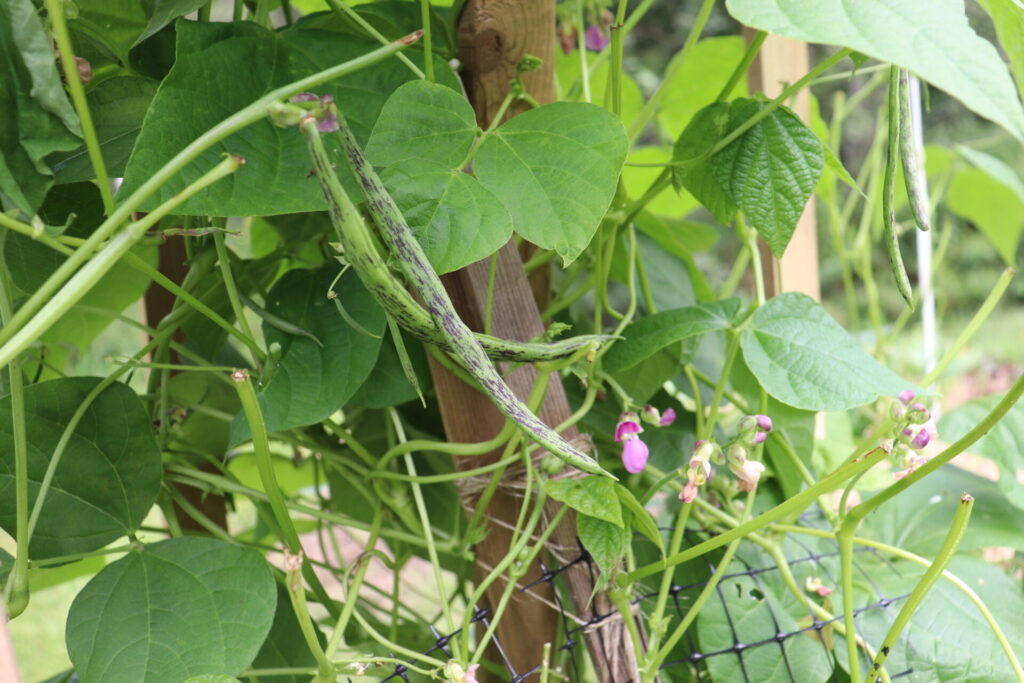
*
We live with profound disconnection from the living world. Because this is fundamentally disturbing and therefore difficult to take in, mostly we don’t. So let’s sit with it a moment.
The living world. How could one be disconnected from it at all? Obviously one can’t be, not physically for a second if there’s blood flowing in you, nor emotionally either; not even intellectually. The disconnect isn’t real. It’s a mental trick: bullshit, illusion. And a deadly one. Yet this disconnection pervades – and arguably defines – modernity, our lives.
One can point to moments in history where this mental-bullshit-trick of disconnection seems really obvious now. Descartes’ cogito ergo sum, which led to bête-machine: roomfuls of educated men vivisecting live animals for science, persuaded that their screams of agony and terror meant nothing. Which led directly to mass factory ‘farming,’ with its tortuous and banalized routines; to all such routinized and rationalized harms inflicted on the living in the quest for ‘knowledge.’ Or for a lighter example, there was the strange popularity of Claude glass among 17th century landscape artists and nature tourists, who preferred turning their backs on mountains and waterfalls to view their tinted images inside a little mirror instead – a forerunner of today’s photoshopping and camera mania, perhaps.
As a child I always wondered why my education took place in a room clearly designed to make one not feel well. (And that was when the windows actually opened.) Beyond the classroom were woods, meadows, rivers, and none of them was brought into learning, which focused mainly on abstractions, information. The school building was constructed by one group of people, cleaned by another, supplied and inhabited by others – and nobody really knew what any of the other groups had to do, and how it affected them. Why didn’t we clean up after ourselves? Build gardens and grow and cook our own food? Decorate? The entire cycle of living and skills needed to navigate it could have been taught right there on those school grounds. But successful disconnection depends on keeping things separate, in compartments, and the mental trick of disconnection rules, as they say.
I thought about this a lot this spring, when for the first time ever I taught a six-week writing course entirely outdoors, in Toronto. At the university one can take classes in over 30 languages, from Estonian to Anglo-Saxon, but there’s no course teaching the names of local flora and fauna, their stories, why they matter, and what students stand to learn from developing relationships with them. There is no grounding in the territory supporting all this ‘higher’ learning – as if knowledge itself is a dirigible floating above the earth. It’s windy up there, vulnerable. You have to keep yourself distracted to forget what isn’t under your feet.
My outdoor course was quite the wild ride. Yet as we struggled to focus on each other in the perpetual din of construction, air traffic, and winds that blew papers away, or amid distracting humans, pigeons and challenging weather, at times squinting through the wildfire smoke from Quebec, something opened up – far beyond what I could offer.
Here we were: in it, together. The living world.
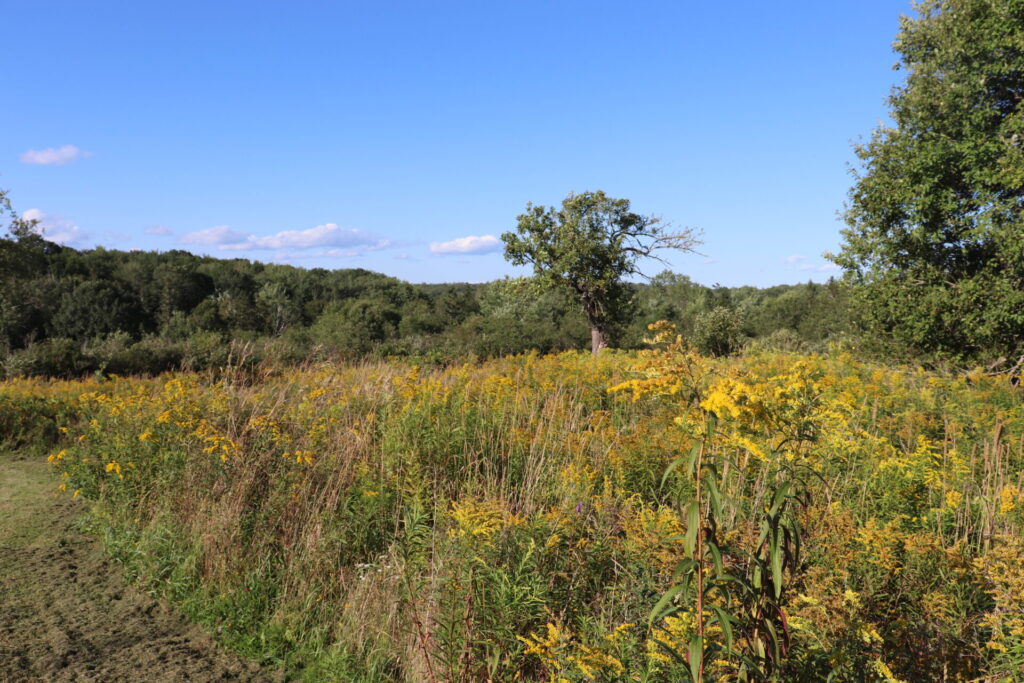
*
Each humble experience of appreciating the living world in new ways—from tending beans to teaching outdoors, from holding an equinox fire to repatterning my posture to nourish muscles, joints, and energy flow—reveals how much I’ve not seen, sensed, appreciated, known. Reveals my confinement. The mind-trick of disconnection and the economy time of our culture turn trite and inconsequential the seasons and rhythms of our lives, turn pulse itself into an inconvenience to be swept aside by progress and subdued by personal will. All of life a bête-machine.
In August the meadows out here become golden seas, the time of goldenrod blossoming. Common and weedy, these flowers appear in the thousands, perhaps millions. Their presence adds something vital as a heartbeat, even when it screams and is not heard. I hope someday to know what the blossoms revealed to ancient cultures, to look back with compassion on my own ignorance and to see about us the fires of celebration lit.
August 2023
This essay is the sixth instalment in a series about my experiences living with the land in rural Nova Scotia. The series began August 1, 2022. New essays will appear approximately every six-eight weeks for one year . Thank you for reading and subscribing.
